Enhancing the security of your passwords in Google Password Manager is simple: enable on-device encryption to ensure only you can access your saved credentials. Google Password Manager not only stores and auto-fills your passwords across devices but also generates strong, unique passwords for you. By activating on-device encryption, you add an extra layer of protection to your stored passwords.
What is on-device encryption?
On-device encryption secures your passwords by encrypting them directly on your device before they are saved to Google Password Manager. This means that only you hold the encryption key; not even Google can decrypt your passwords without it. Typically, when you save passwords using Google Password Manager, they are encrypted using standard encryption, and Google manages the encryption key stored in your Google account. However, with on-device encryption, the key remains solely with you.
Encryption works by scrambling your information so that it cannot be read without the correct key. In standard encryption, Google can decrypt your passwords when necessary, such as when you sign in to websites or when Google performs a Password Checkup. With on-device encryption, you need to provide the key yourself to access your passwords. This key can be your Google account password or your device's screen lock password, depending on compatibility.
It's important to remember that if you lose your encryption key, you will lose access to all your saved passwords. Additionally, once you enable on-device encryption, this feature cannot be turned off.
Note: Once you enable on-device encryption for your passwords, the feature can't be turned off.
Be aware that enabling on-device encryption might affect certain features. For instance, some websites may not automatically sign you in. Moreover, Google will no longer be able to perform automatic Password Checkups to evaluate the security of your passwords because they cannot decrypt them without the key. You will need to run Password Checkup manually to ensure your passwords remain secure.
Enable on-device encryption
On-device encryption can be enabled on both desktop and mobile devices, and the process is quick and straightforward. The following steps will guide you through enabling it on your desktop.
Step 1: Open the Google Chrome browser on your computer. Click the three-dot menu icon located at the far right of the address bar.

Step 2: In the drop-down menu that appears, select 'Settings'.

Step 3: In the Settings page, click on the option labeled 'Manage your Google Account'.
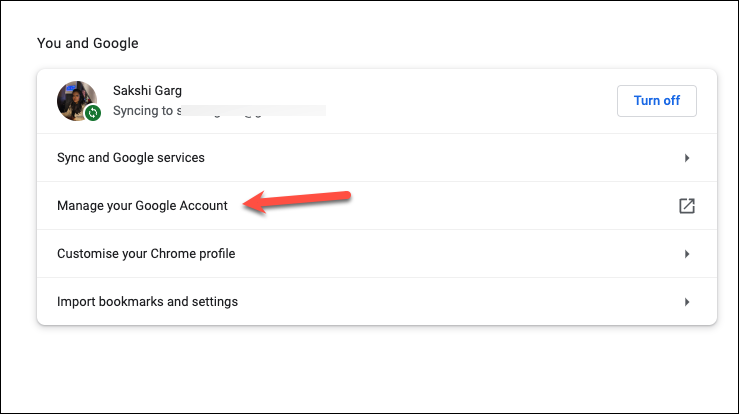
Step 4: Your Google Account settings will open in a new tab. From the navigation menu on the left side, select 'Security'.

Step 5: On the Security page, scroll down to the section titled 'Signing in to other sites' and click on 'Password Manager'.
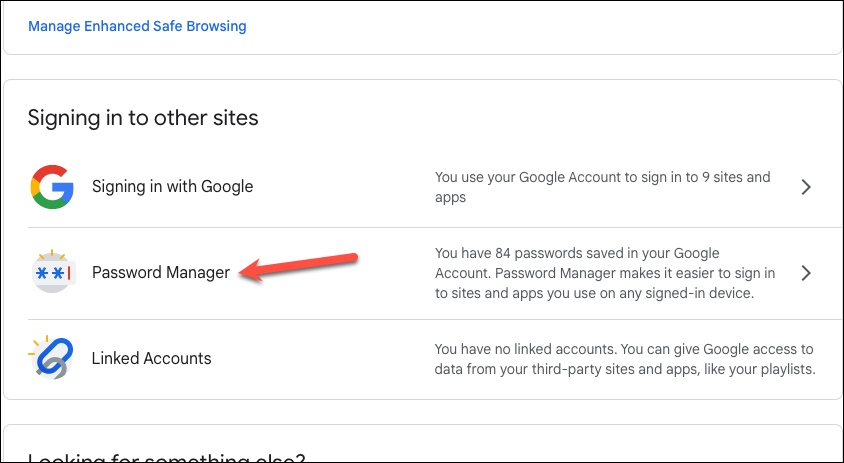
Step 6: On the Password Manager page, click the 'Settings' icon, typically represented by a gear icon.
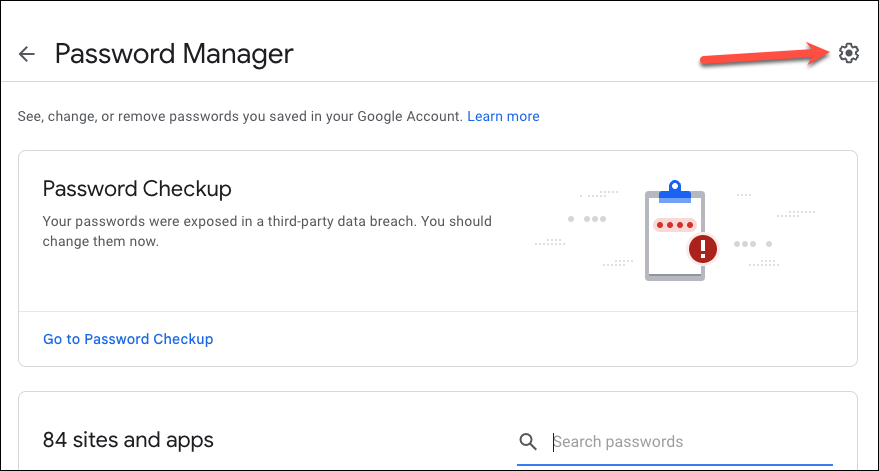
Step 7: Under the section 'On-Device Encryption', click on 'Set Up'.
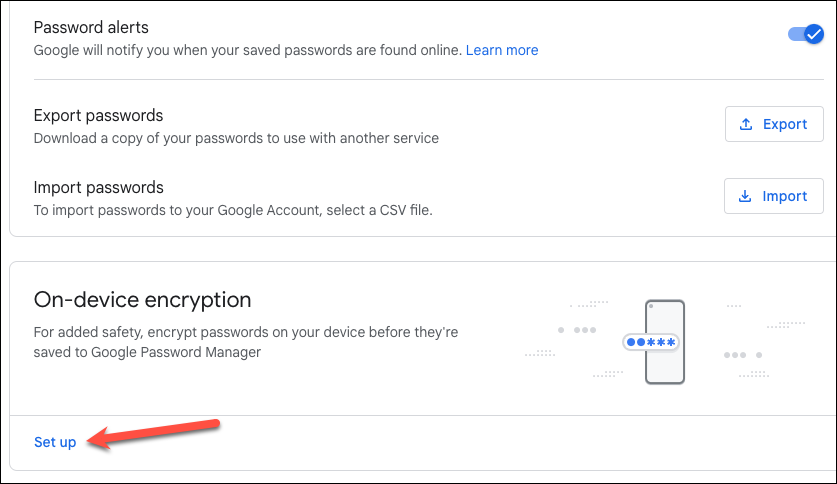
Step 8: A prompt will appear explaining on-device encryption. Click 'Next' to continue.
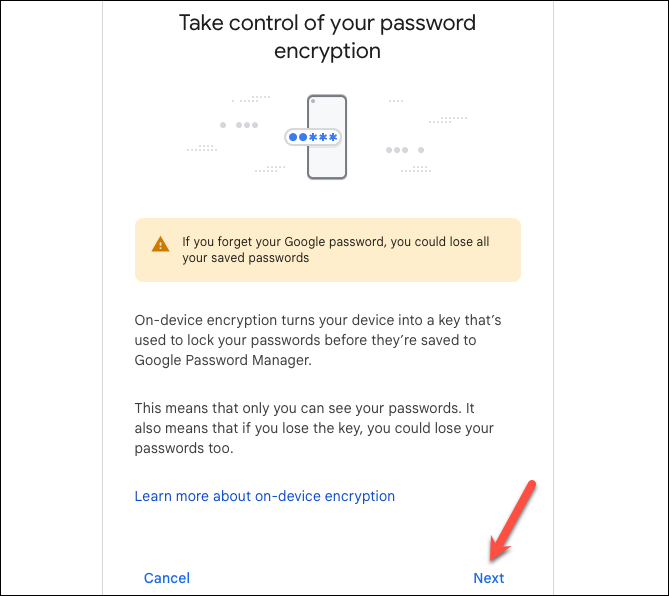
Step 9: Confirm your choice by clicking 'Set up' to enable on-device encryption.
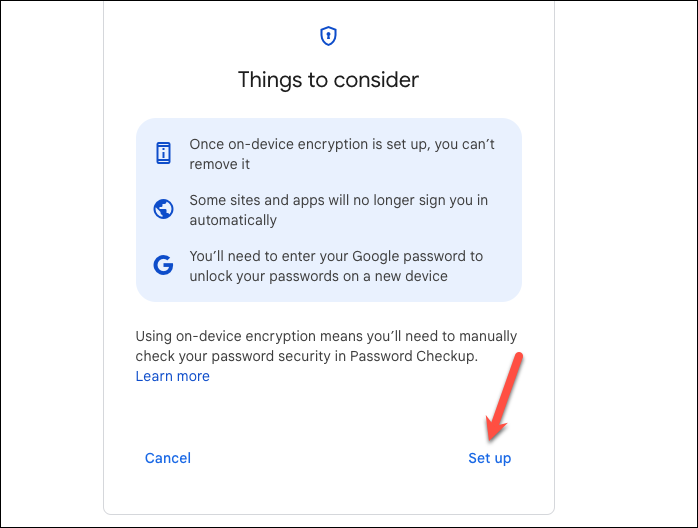
Step 10: To verify your identity, enter your Google account password when prompted, and click 'Next'. Remember that if you forget your Google password, you may lose access to your saved passwords. Once this step is completed, on-device encryption will be activated, and you will not be able to disable it.

Step 11: Google will take a few moments to change the encryption settings. Once completed, you can use your device as a key to unlock your passwords. Click 'Done' to return to the settings page.
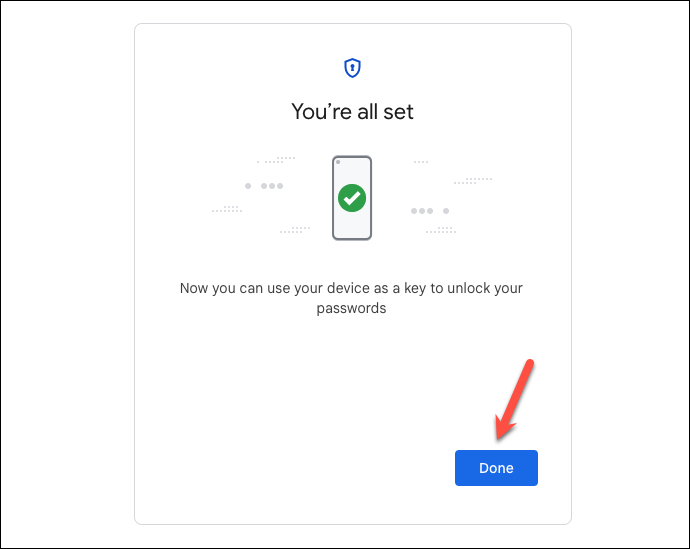
Password availability on other devices
A common concern when enabling on-device encryption is whether your passwords will remain accessible on other devices. Rest assured, your passwords will be available across all your devices. However, to access them, you will need to provide your Google account password or, on compatible devices, your device's screen lock password.
Recovering your passwords
Once you have enabled on-device encryption, it is advisable to set up password recovery options for your Google account. These recovery methods are crucial if you ever forget your Google password or lose access to your device. In the event that you change your Google account password, your saved passwords in Google Password Manager will remain locked until you confirm the new password. To prevent any interruptions, confirm the new password promptly after changing it.
Additionally, syncing your passwords across multiple devices is recommended. This ensures that even if one device is lost or inaccessible, you can still retrieve your passwords from another synced device.
Enabling on-device encryption in Google Password Manager significantly enhances the security of your saved passwords by ensuring that only you can access them. Taking a few moments to activate this feature puts you in control of your password security.










Member discussion